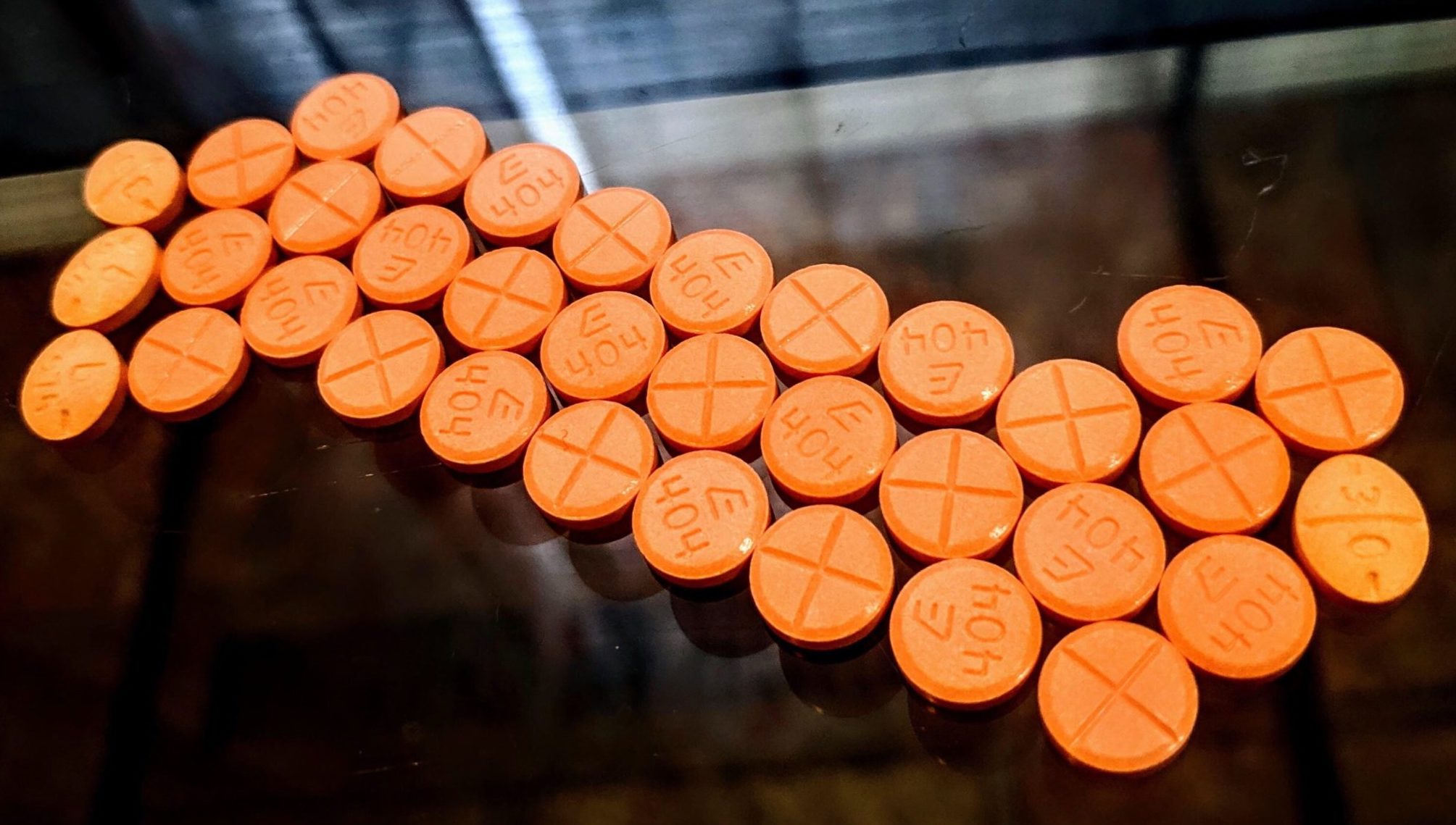Adderall Addiction
Adderall Addiction

What is Adderall?
Adderall belongs to a class of medications known as central nervous system (CNS) stimulants. It is available only on a doctor’s prescription. Other examples of stimulant medications are Ritalin, Concerta, Dexedrine, Focalin, Metadate, Methylin, and Vyvanse.
Adderall contains four amphetamine salts. They are dextroamphetamine saccharate, amphetamine aspartate, dextroamphetamine sulfate, and amphetamine sulfate. These ingredients increase the levels of two key brain chemicals: dopamine and norepinephrine (noradrenaline). It increases brain activity, focus, energy, and feelings of well-being.
Adderall Uses
The US FDA has approved Adderall for the treatment of two conditions: attention-deficit hyperactivity disorder (ADHD) and narcolepsy.
Narcolepsy is a rare sleep disorder. It causes excessive sleepiness during the day. Some people may experience sudden episodes of sleep called “sleep attacks.” Other symptoms can include seeing or listening to things that are not there (hallucinations) and sleep paralysis.
British chemist George Barger and physiologist H.H. Dale discovered amphetamine in 1910. Gordon A. Alles, an American chemist, first synthesized amphetamine in 1927.
In 1935, the pharmaceutical company Smith, Kline, and French marketed Benzedrine (the brand name for amphetamine). It was used to treat narcolepsy and mild depression. In 1937, Smith, Kline and French started marketing a more powerful form of amphetamine (d-amphetamine) under the brand name Dexedrine.
Obetrol Creation
In 1994, Richwood Pharmaceuticals purchased a diet pill containing mixed amphetamines, known as Obetrol. Originally developed by Rexar Pharmaceuticals, it was a popular diet pill in the 1960s. Richwood Pharmaceuticals renamed it “Adderall” and began marketing it as a treatment for ADHD.
FDA Approval
However, the FDA did not approve Adderall, citing a lack of strong evidence of safety and efficacy. The FDA re-approved Adderall in 1996 for the treatment of ADHD. Interestingly, it was still not clear if the medication was effective in treating ADHD. In 2002, the FDA approved a long-acting, once-daily formulation (Adderall XR).
Adderall also goes by street names such as:
• Addys or addies
• Bennies
• Hearts
• Truck Drivers
• Black Beauties
• Zing
• Speed
• Vitamin R (particularly for Ritalin)
• Uppers
• Crosses
• LA Turnaround
• Beans
• Pep Pills
• Dexies
• Study Budies
• Smart Pills
Mydayis is a drug similar to the long-acting version of Adderall (Adderall XR).
Is Adderall Addictive?
The United States has been struggling with an amphetamine epidemic since the mid-1940s. Medical use of amphetamine has increased by more than five folds since 1995. This is according to the Drug Enforcement Administration (DEA).
According to the US Department of Health and Human Services, methamphetamine abuse.
• Doubled form 1983 to 1988
• Doubled again from 1988 to 1992
• Quintupled form 1992 to 2002
2015 National data suggests one in ten college students misused Adderall in 2014. Most notably, Adderall production jumped by nearly 9,008,000% from 1992 to 2002. The burgeoning production is driven by two factors. First is an increase in the diagnosis of ADHD. Second is emerging Adderall abuse and addiction. Emergency department (ED) visits involving Adderall and other stimulants have skyrocketed in the last few decades.
According to the 2013 Dawn Report:
• ED visits involving prescription stimulants reached 31,244 in 2010 from 13,397 in 2005
• Form 2005 to 2010, ED visits related to nonmedical use of stimulants almost tripled to 15,585
• During the same period, ED visits due to serious side effects of stimulants almost doubled from 5,085 to 9,181
A key finding is that ED visits nearly quadrupled among persons aged 18 to 25. On the other hand, ED visits among children younger than 18 remained steady from 2005 to 2010.
Factors that Contribute to Adderall Abuse and Addiction
Adderall Use and Abuse
Follow your doctor’s instructions and directions on the prescription label
Your doctor may adjust doses depending on your needs and response
Avoid sharing your medicine with another person, especially if the person has previously abused the drug
Never take more or less than the recommended doses
Store your medicine in a safe place, out of reach of children and other persons
Talk to your doctor or pharmacist if you have any questions about the use of the drug
Do not crush, chew, beak, or open Adderall XR pills. Swallow intact pills.
Avoid taking stimulants in the late evening, as they can affect sleep
Taking a drug in larger doses more often and for a longer time than recommended is drug abuse. Drug abuse also involves unapproved uses, such as for the euphoric effect.
Adderall can be very addictive if you abuse it. It could be as addictive as opioids, such as morphine, oxycodone (OxyContin, Percocet), and hydromorphone (Dilaudid).
Some people abuse Adderall to:
• Experience a “high”
• Lose weight
• Boost mental function
• Stay awake
They may abuse the drug by:
• Taking more than the recommended number of pills.
• Injecting its solution into the vein. People who inject Adderall can be at an increased risk of infections, heart disease, and overdose.
• Snorting the powdered pill.
• Smoking the powder.
• Mixing it with other drugs or alcohol. Using a combination of Adderall with other drugs such as Xanax and alcohol can cause fatal complications.
Health Risks
People who inject Adderall may be at a greater risk of contracting HIV and hepatitis. Drug abuse impairs judgment. Impaired judgment and increased tolerance can lead to a potentially fatal overdose. Both short-term and long-term Adderall abuse can cause:
• Severe skin rashes
• Increased irritability
• Increased body temperature
• Over-breathing that may cause breathlessness
• Hyperactivity
• Nervousness
• Anxiety
• Nightmares
• Psychosis
• Insomnia
• Personality changes
• High blood pressure
• Loss of appetite
• Uncontrollable laughing or crying
• Social withdrawal
• Sadness
• Mood swings
• Anger
Withdrawal Symptoms
Adderall can cause withdrawal symptoms when you suddenly stop taking it. These symptoms typically develop within hours to days after the last use.
Withdrawal symptoms are usually more severe if you have abused large amounts of Adderall for prolonged periods. Adderall withdrawal is also known as the “Adderall Crash.”
Symptoms:
• Intense cravings
• Too much or too little sleep
• Increased appetite
• Anxiety and irritability
• Panic attacks
• Tiredness
• Low moods
• Depression
• Suicidal thoughts
Talk to your doctor if you experience any of these symptoms after stopping your drug.
Can You Overdose On Adderall?
Signs and Symptoms of Overdose
Adderall overdose can cause mild to severe symptoms or even death. These symptoms develop due to abnormally high levels of brain chemicals such as dopamine, serotonin, and norepinephrine.
There are no specific antidotes to stimulant overdose. An antidote counteracts the effects of a poison such as naloxone (Narcan), which is an antidote to opiate overdose.
Treatments for Adderall overdose are supportive. Medications to control the symptoms of an overdose can include benzodiazepines and antipsychotic medications.
In the case of an overdose, contact the National Poison Center at 1-800-222-1222 right away
The symptoms to watch out for include:
• Mental confusion
• Increased movement
• Abdominal pain
• Hallucinations
• Irregular heartbeats
• Body temperature 106.7°F (41.5°C) or higher
• Anxiety and panic
• Restlessness
• Heart attack
• Breakdown of muscle fibers (rhabdomyolysis)
• Headaches
• Nausea and vomiting
• Increased breathing rate
• High blood pressure
• Dilated pupils
• Shaking
• Seizures
• Physical aggression
• Kidney failure
• Death
Misconceptions
Adderall Can Sharpen Your Intelligence
Fact: To call Adderall a “study drug” or “smart drug” would be a misnomer. Stimulants may help to improve your focus, but they will not help you get good grades. Long-term drug abuse can harm your physical and mental health.
It is a Type of “Brain Vitamin”
Fact: Adderall or any other stimulant is NOT a brain vitamin. They do not nourish your brain or help it function better.12 They affect the levels of brain chemicals and can cause an addiction. Thus, you should avoid taking stimulants without first consulting your doctor.
It is a “Soft” Drug. There are No Risks
Fact: In scientific literature, there is no such thing as a “soft” or “hard” drug. The fact is that it is a schedule II controlled substance. This means it carries a high abuse potential and should be used only under medical supervision. Besides, when you take Adderall without a prescription, you may experience unpleasant side effects.
Treatment
Detoxification (Detox)
The detoxification process has two major goals. First is to remove the drug from the body. Second is to prepare a person for long-term rehabilitation.
During detox, a doctor may gradually decrease the dose of Adderall. This is known as dose tapering. Because stimulants are powerful drugs, quitting them cold turkey is not recommended.
Detox involves three steps. They are:
Evaluation
Identifying the drug and determining the amount of the drug present in the body
Evaluating a person’s behavior and co-occuring illness
Stabilization
Explaining the outcomes of the detox process to a person and family members
Relieving withdrawal symptoms with or without using medications .If you experience severe withdrawal symptoms, your doctor may prescribe medications to control anxiety.
Guiding into Long-term Rehabilitation
Detoxification only addresses physical dependence. Addiction affects almost every aspect of a person’s life, such as psychological health, relationships, career, and social life. Long-term rehabilitation addresses problems with all these aspects.
Long-term Drug Rehabilitation Program
This can involve the use of talk therapy or behavioral therapy to correct a person’s faulty thinking patterns associated with drug abuse. Cognitive-behavioral therapy (CBT) can help you identify coping skills. CBT not only helps with addiction but can also help relieve anxiety. You may attend an individual or a group session to learn essential life skills. These life skills help to facilitate your transition to a drug-free life. Your doctor may also recommend joining self-groups or entering sober living homes. Depending on your response, you may need to continue attending the group sessions after the completion of the treatment. This is known as addiction aftercare.

We Work With Most Major Insurance Providers
The Safe Harbor Treatment Center’s Admissions Team works to ensure that we can help as many people struggling with substance abuse. Verify your benefits now and we’ll get back to you right away.
Receive the highest level of care available at Safe Harbor. We are here to answer your call or fill out our confidential contact form to get started.
- Journal of Evidence-based Social Work. Adderall abuse on college campuses: a comprehensive literature review.
- The New York Times Magazine. Generation Adderall.
- United States Drug Enforcement Administration. Drug Scheduling.
- Official Site: MYDAYIS.
- American Journal of Public Health. America’s First Amphetamine Epidemic 1929–1971 A Quantitative and Qualitative Retrospective With Implications for the Present.
- Addiction Behaviors. Do college students improve their grades by using prescription stimulants nonmedically?
- SAMHSA. The Dawn Report.
- Drug Enforcement Administration. Diversion Control Division.
- TOXNET Toxicology Data Network. Amphetamine.
- CNS Drugs. Overdose of drugs for attention-deficit hyperactivity disorder: clinical presentation, mechanisms of toxicity, and management.
- SAMHSA/CSAT. Treatment for Stimulant Use Disorders.
- National Institute on Drug Abuse for Teens. 5 Myths about ADHD Drugs.

